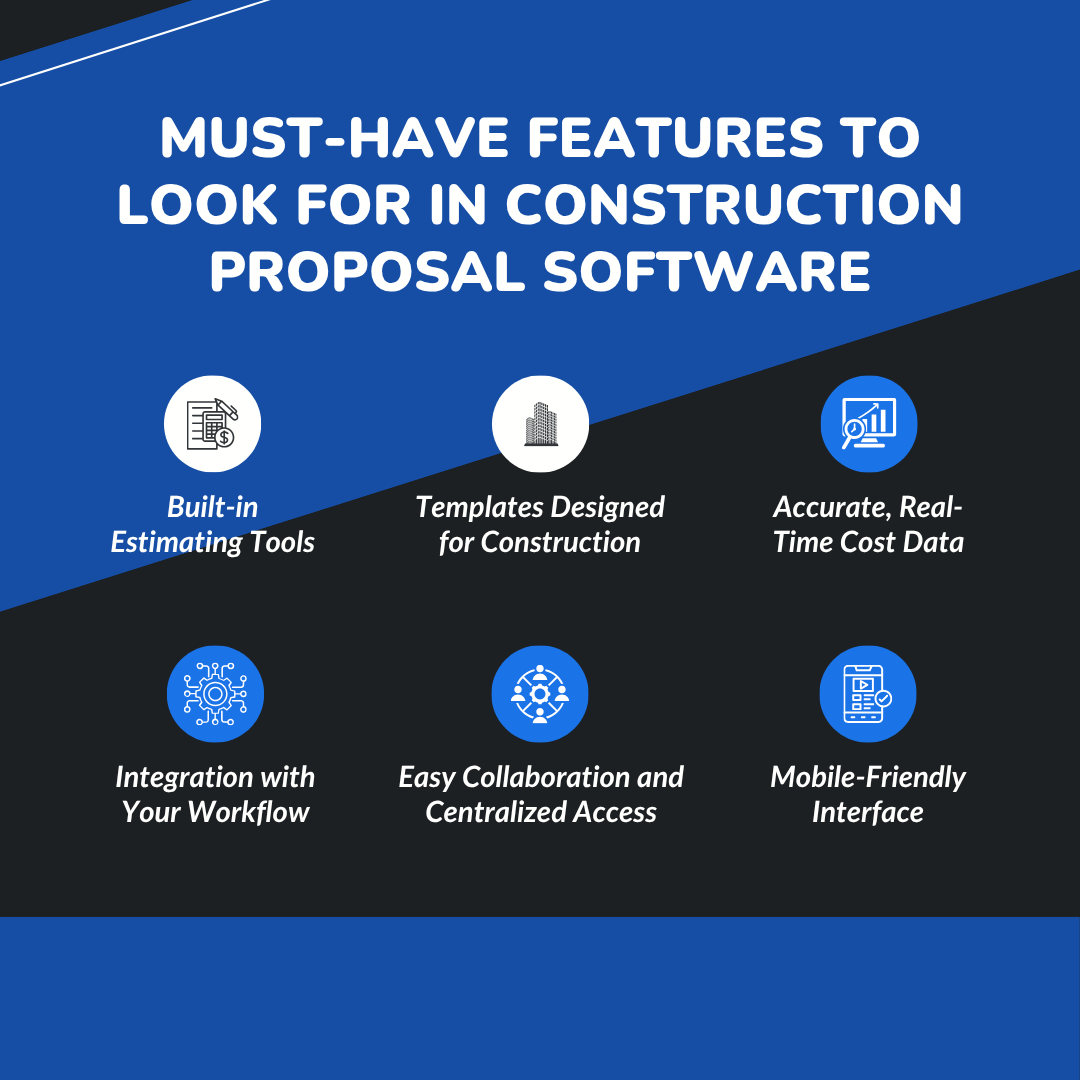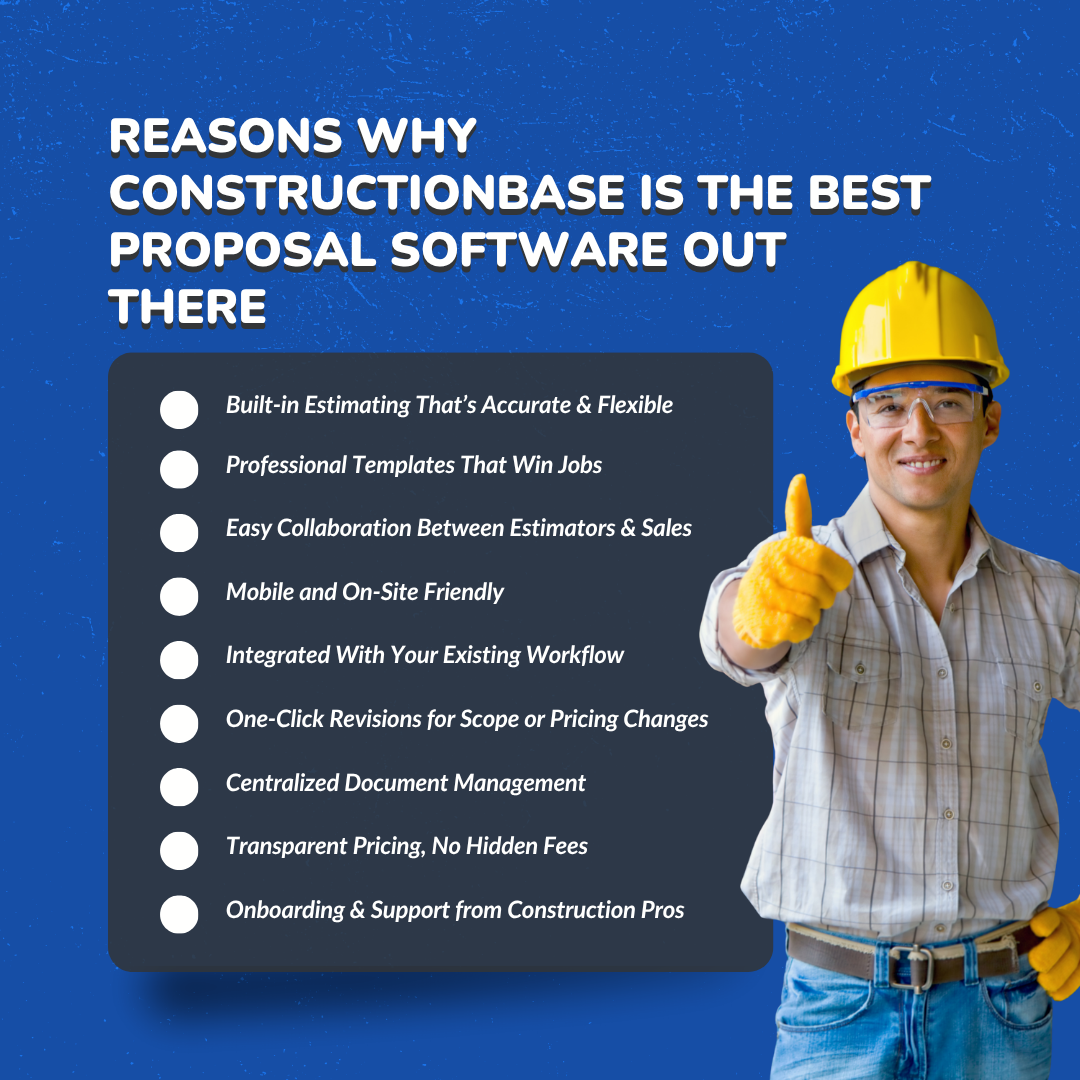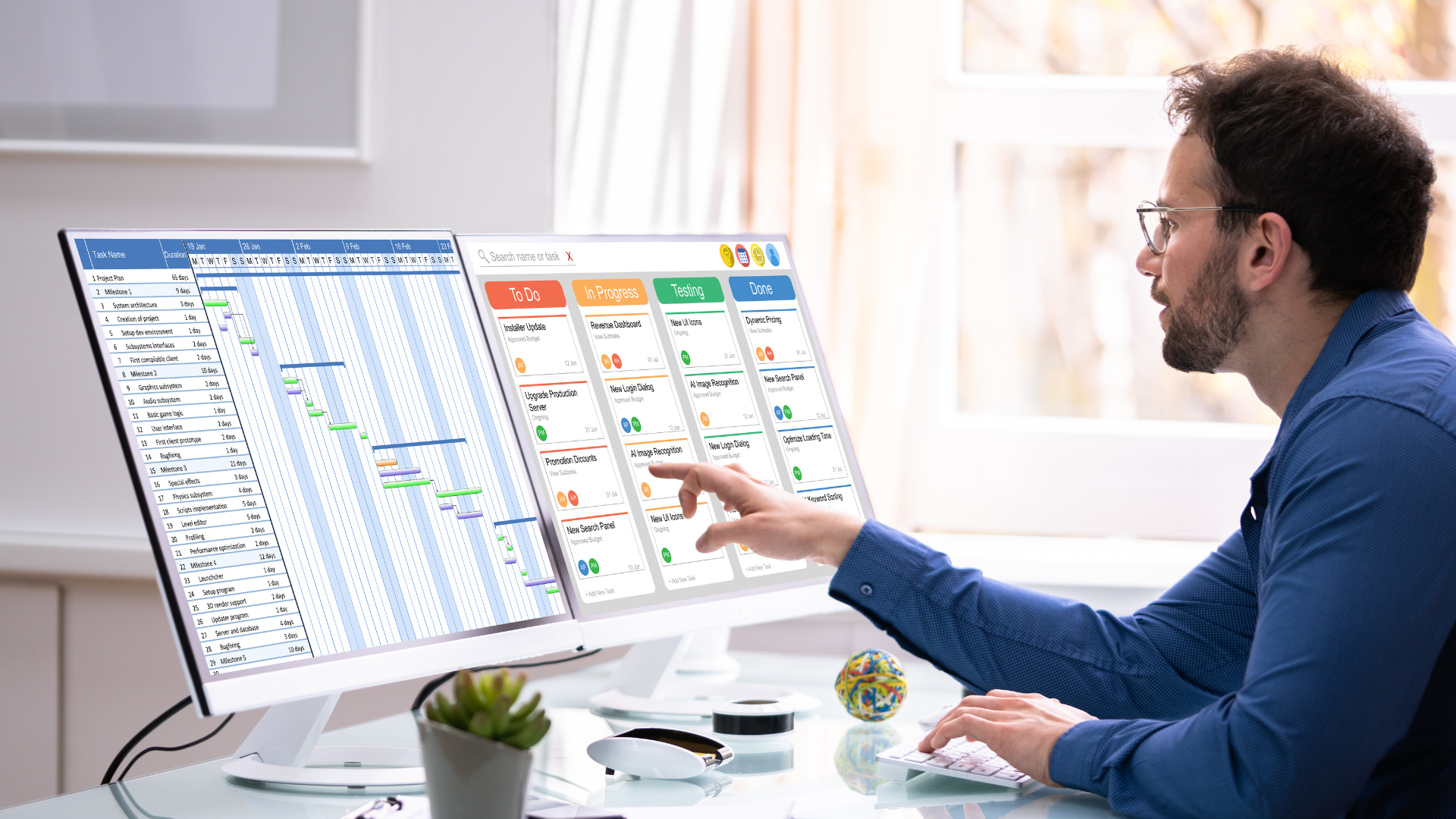In construction, the first impression often comes in the form of a proposal. It's more than a quote; it's a statement of professionalism, preparation, and trust. And no matter how good your team is on the job site, a vague or delayed proposal can cost you the project before it even begins.
In today’s fast-moving and competitive construction industry, proposals need to be clear, accurate, and fast. The right construction proposal software isn’t a luxury; it’s a core part of doing business.
How to Choose the Right Construction Proposal Software
For Construction Companies
The global construction estimating and proposal software market was valued at approximately USD 1.5 billion in 2024 and is expected to soar to USD 2.62 billion by 2030, growing at a compound annual growth rate (CAGR) of 10.2% between 2025 and 2030, based on a report by Grand View Research. Highlighting the increasing demand for faster, more accurate bids and all-in-one digital solutions across construction companies.
Whether you’re a general contractor, estimator, project manager, or construction business owner, this guide is here to help you understand what truly matters when choosing software that simplifies and strengthens your proposal process.
Let's check out what's in this blog:
- What construction proposal software really is (and what it isn’t)
- Why spreadsheets and Word docs aren’t cutting it anymore
- Key features your team actually needs
- Why ConstructionBase is trusted by modern contractors
Key Takeaways
- Generic tools fall short: Construction needs industry-specific features.
- Polished proposals win more jobs: First impressions matter.
- Manual errors cost you: Automation ensures accurate, up-to-date estimates.
- Scalability is key: Pick software that fits your team today and tomorrow.
- ConstructionBase does it all: Fast estimates, better collaboration, more wins.
What Is Construction Proposal Software and Why Is It Different from Generic Tools for Accurate Estimates
Construction proposal software is more than a simple document generator. It’s a dedicated system designed to handle the specific needs of contractors, like markup, line-item labor and material costs, and bid templates.
Unlike tools like Word or Excel, construction software automatically applies takeoff data, integrates cost libraries, and helps teams collaborate from one centralized platform. It’s about cutting manual data entry, reducing human error, and delivering professional proposals that reflect your brand and precision.
Plus, it aligns estimating, sales, and operations teams by keeping everyone on the same page with real-time project details.
Common Challenges Without Proposal Software in Construction
Despite all the innovation happening on job sites, from drone surveys to smart materials, many construction companies are still stuck using outdated tools for one of the most critical parts of the business: proposals and estimates.
Let’s take a closer look at the everyday pain points construction teams face when they don’t use construction estimating software:
1. Juggling Too Many Spreadsheets and Docs
- Estimators often rely on separate spreadsheets, emails, and Word documents to build out cost estimates. This manual process takes valuable time, increases the risk of inconsistency, and drains productivity.
- If your team is spending hours copying and pasting labor and material costs, there’s a high chance they’re also making mistakes and missing deadlines.
> Keyword boost: Estimators need to turn estimates into proposals quickly, but without a centralized location for cost data and reusable templates, even small changes become time-consuming.
2. Inconsistent and Unbranded Proposals
- Without standardized templates, proposals vary wildly from one team member to another. Some have outdated logos, others miss critical project financials or scope details.
- This inconsistency can leave a bad impression on potential clients, who may interpret it as a lack of professionalism or preparation.
> Key takeaway: Winning proposals start with consistency. A unified, professional format makes your brand look dependable and detail-oriented.
Have a look at this: Importance of Construction Estimating Software in Managing Cost
3. Costly Errors That Hurt Your Profit Margins
- Manual data entry is a recipe for human error. A single misplaced digit or outdated material price can throw off your project budget by thousands.
- These errors don’t just affect your bottom line; they affect your reputation.
> Remember: More accurate estimates mean more competitive bids. Getting it right the first time helps you win jobs and keep them profitable.
4. Poor Collaboration Across Teams
- When sales, estimators, and project managers operate in silos, details fall through the cracks. Notes get lost, pricing assumptions change, and no one knows which version of the proposal is the most up-to-date.
- Without a centralized platform, teams spend more time clarifying details than moving the deal forward. It slows down the entire client approval process.
> The result? Lost deals, frustrated teams, and wasted time on back-and-forth communication.
5. Delayed Responses That Cost You Jobs
- In construction, speed is a competitive advantage. Clients expect detailed proposals fast, especially when they’re collecting bids from multiple companies.
- Without proposal software, even a simple revision means digging through documents, recalculating line items, and formatting everything again.
By the time you send it back, the client might already have chosen someone else. And Here’s the Big Picture:
When you add up all these gaps, manual processes, data errors, delayed responses, and poor collaboration, it’s easy to see how traditional methods hold your business back.
By not using modern takeoff software and construction proposal tools, companies miss out on:
- More projects they could have won
- Faster, more accurate estimates that their clients expect
- Time saved that could be spent on higher-value work
- Money saved by eliminating costly rework or wrong numbers
If you’re serious about winning more deals, improving your proposal turnaround time, and delivering accurate estimates with just a few clicks. In that case, it may be time to rethink how your team creates, manages, and sends proposals.
Must-Have Features to Look for in Construction Proposal Software

A significant 68% of organizations indicated that they use software for managing project finances and proposals, highlighting their commitment to effectively managing costs and budgets.
Let's have a brief look at what features to look for:
1. Built-in Estimating Tools
- Add material and labor costs directly
- Supports markup percentages and unit-based pricing
- Reduces reliance on external tools
2. Templates Designed for Construction
- Prebuilt and reusable proposal layouts
- Tailored for GC bids, subcontractors, and specialty contractors
- Includes branded headers, scope sections, line items, and totals
3. Accurate, Real-Time Cost Data
- Syncs with internal databases or external suppliers
- Reflects updated material and labor costs instantly
4. Seamless Integration
- Works with your project management, CRM, and accounting software
- Makes it easier to track proposals, assign tasks, and update project budgets
5. Cloud-Based Collaboration
- One centralized platform
- Access from the office or the job site
- Real-time updates and shared views for your team
6. Mobile-Friendly Interface
- Create or revise proposals from a phone or tablet
- Ideal for field teams and site visits
How to Choose Proposal Software That Fits Your Team’s Size & Structure
The best construction proposal software isn’t just powerful, it’s tailored to your team size, workflow, and project load. Here’s how to find the right fit:
Small Teams (1–10 People)
When you’re running lean, speed and simplicity are everything. Look for software that:
- Helps you quickly create proposals using reusable templates
- Allows for fast, accurate estimates without a full-time estimator
- Highlights important details automatically, so no detail gets missed
- Offers quick setup and easy onboarding with no IT headaches
- Keeps costs low while still helping you win more jobs
Best for: Independent contractors, small general contractors, and family-run businesses that need to move fast without sacrificing professionalism.
Mid-Sized Teams (10–50 People)
As your team grows, so does the complexity. Look for tools that:
- Integrate with your CRM, estimating, and financial software
- Use branded templates to maintain proposal consistency
- Support collaboration between sales, estimators, and admins
- Provide built-in contract generation to close deals faster
- Can scale as your number of bids and clients increases
Best for: Growing firms that need structured systems to handle more clients, proposals, and internal collaboration.
Larger Construction Firms (50+ People)
Larger teams need robust, customizable systems. Choose software that:
- Offers advanced reporting, real-time tracking, and analytics
- Supports multi-level approvals and permission-based access
- Integrates with ERP, accounting, and construction takeoff tools
- Enables custom workflows tailored to your organization
- Maintains high data security and compliance
Best for: Established firms managing high volumes of proposals across departments and multiple locations.
Ask yourself and your team:
- Does this software actually reduce the daily friction we face, or does it add more steps?
- If it streamlines your workflow, improves collaboration, and saves time, it’s a win.
Must read: How to Select the Best Construction Management Software
Why ConstructionBase Is the Best Proposal Software Out There

1. Built-in Estimating That’s Accurate and Flexible
- Real-time cost estimates
- Auto-apply taxes, markups, and fees
- Pulls from current supplier pricing
2. Professional Templates That Win Jobs
- Beautiful, branded design
- Ready-to-use for multiple project types
- Speeds up the proposal process without sacrificing quality
3. Easy Collaboration Between Estimators and Sales
- Shared dashboards
- Track changes and updates easily
- Keeps everyone aligned on project scope and cost
4. Mobile and On-Site Ready
- Estimate and send proposals from anywhere
- Field teams love the flexibility
5. Integrates With Your Workflow
- Compatible with top CRMs and accounting tools
- No need to switch platforms
6. One-Click Revisions
- Update scope or pricing in seconds
- Keeps previous versions for reference
7. Centralized Document Management
- Store, track, and access all your bids from one location
- Fast search for proposal history
8. Transparent Pricing
- No hidden fees
- Flat pricing by team size
9. Real Support from Construction Experts
- Our onboarding team includes former estimators and project managers
- Help that actually understands your business
Take a look at this: Construction Estimating Software: Fast, Accurate Bids in minutes
What to Avoid When Selecting Construction Proposal Software
Choosing the wrong proposal software can hinder your workflow, lead to financial waste, and potentially cost you jobs. So avoid these common mistakes:
1. Overpaying for Unused Features
Don’t get distracted by flashy add-ons you’ll never need. Focus on tools that help you quickly create, estimate accurately, and save money, not bloatware that eats your budget.
2. Using Generic, Non-Construction Software
Repurposed tools often lack critical features, such as detailed estimates, reusable templates, or takeoff compatibility. Choose an all-in-one solution designed for construction companies to handle real project demands.
3. Skipping Training
Without proper onboarding, even great software falls flat. Ensure your team knows how to seamlessly transition from takeoff to proposal and use the platform to its fullest.
4. Ignoring Estimator and Sales Input
Your estimators and sales teams know the workflow best. Involve them early to pick a tool that supports improved collaboration and captures all important details clients expect.
Must read: How to Select the Best Construction Management Software
Final Checklist: Choosing the Right Proposal Software, Step by Step
Making the right software decision isn’t about chasing the flashiest features; it’s about solving real problems your team faces every day. Here’s a practical step-by-
step guide to get it right:
1. Identify Your Primary Goals
Start by answering:
- Do you need to speed up proposal creation?
- Is accuracy in estimates your top priority?
- Are you looking to create consistent, branded proposals across your team?
Clearly defining your top 2–3 goals helps you avoid getting distracted by features you won’t use.
2. Map Out Your Current Process
Before you switch, understand how you currently:
- Create proposals
- Handle estimates and revisions
- Track approvals or client feedback
- Store and share documents
This helps you identify what works, what doesn’t, and what the new software needs to replace or improve.
3. Shortlist and Test Multiple Options
Don’t settle on the first tool you find. Instead:
- Request live demos and ask questions specific to your workflow
- Use free trials with real data and projects
Compare how each tool handles your common tasks (like estimate-to-proposal handoff or adding terms and conditions)
4. Involve the Right People
Include both office and field team members who’ll use the system regularly. Ask them:
- Is the interface easy to use without training?
- Does it reduce double-entry or back-and-forth emails?
- Can they quickly create, send, and edit proposals, even on the go?
This ensures team-wide adoption and avoids buying software that no one uses.
5. Look for Strong Onboarding and Ongoing Support
Even the best tool won’t help if your team isn’t supported. Make sure the vendor offers:
- Guided onboarding sessions
- Ongoing live support (not just chatbots or forums)
- Training materials or video libraries
- Regular updates based on customer feedback
These resources reduce downtime and help you fully unlock the value of the software.
Conclusion: Build Stronger Bids, Close Better Deals
At the end of the day, your proposal is your pitch. It’s what makes a client choose you over another. And in a world where small margins and tight timelines rule, having reliable, construction-specific proposal software is the difference between chasing projects and closing them.
Therefore, ConstructionBase was designed for builders, by builders. It's here to save time, reduce errors, improve team alignment, and help you win more and more profitable projects.
About ConstructionBase
ConstructionBase is an all-in-one construction proposal and estimating software that estimates quickly, trusted by contractors, estimators, and project managers across North America. With a commitment to speed, accuracy, and ease of use, it helps teams of all sizes create professional proposals that win more jobs, fast.
Try ConstructionBase for smart estimating and beautiful proposals, delivered with ease.
FAQs
Can ConstructionBase handle specialty contracting proposals?
Yes. Whether you're a plumber, electrician, or roofing contractor, our templates and estimating tools are fully customizable.
How does ConstructionBase improve collaboration?
It keeps all project and customer details, estimates, and revisions in one place so teams can access the latest version anytime, anywhere.
Can I integrate ConstructionBase with QuickBooks or my CRM?
Absolutely. We support integrations with major CRMs and accounting platforms.
How fast can I create proposals?
With our templates and built-in estimating, most users create detailed, branded proposals in under 30 minutes.
Have questions or need personalized advice?
Talk to an Expert Today and let our construction specialists guide you to success.







